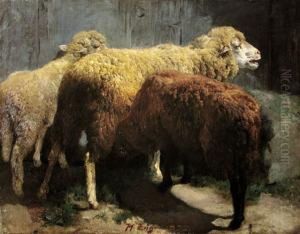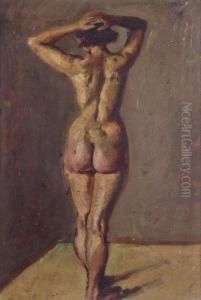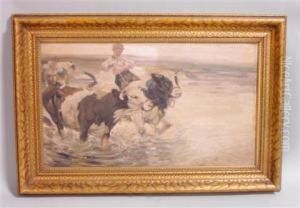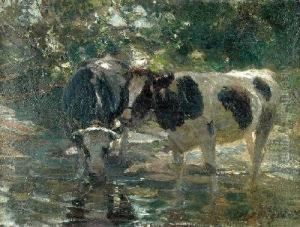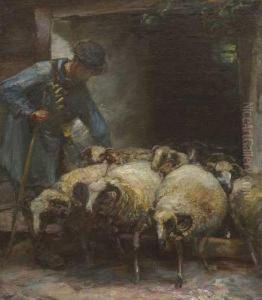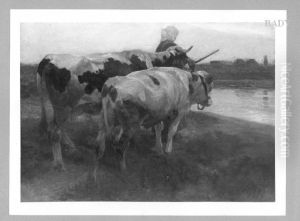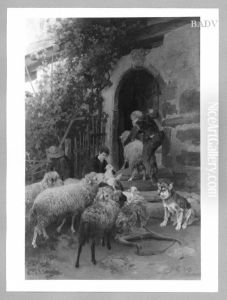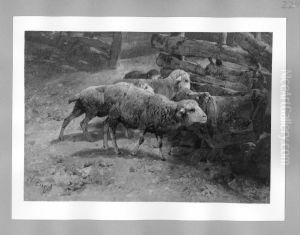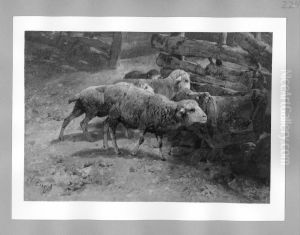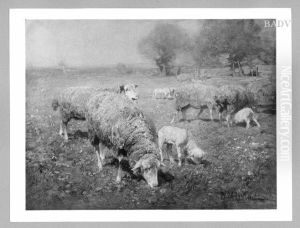Heinrich Von Zugel Paintings
Heinrich von Zügel was a German painter, born on October 22, 1850, in Murrhardt, Württemberg. He is best known for his work in the Realist style, focusing particularly on animal and landscape paintings. Von Zügel showed an early affinity for art, and his talent was recognized when he was a child. He began his formal training at the Stuttgart Art School, where he studied under Bernhard von Neher, an artist known for his historical and religious paintings.
After his initial training, von Zügel continued his studies at the Munich Academy of Fine Arts starting in 1871. There, he was influenced by the works of the Barbizon school and the Dutch animal painters. He developed a keen interest in plein air painting, which allowed him to capture the natural light and atmosphere that would become characteristic of his later work.
Von Zügel’s paintings often depicted farm animals, especially sheep and cows, in pastoral settings. He was adept at portraying the textures of animal fur and the varied landscapes in which they were situated. His approach combined a realistic depiction of his subjects with a sense of immediacy and a vibrant, yet harmonious, color palette.
Throughout his career, von Zügel gained considerable recognition for his art. He was a professor at the Munich Academy of Fine Arts from 1895 to 1922, where he influenced a number of students. His work was exhibited widely, including at the Glaspalast in Munich, and he received numerous awards and honors for his contributions to German art.
Heinrich von Zügel’s legacy is marked by his commitment to the Realist tradition and his ability to imbue his animal subjects with a sense of vitality and presence. His work remains on display in many galleries and museums, where it continues to be appreciated by art lovers. He passed away on January 30, 1941, in Munich, leaving behind a body of work that continues to be celebrated for its technical skill and artistic beauty.
